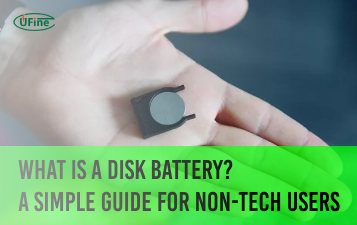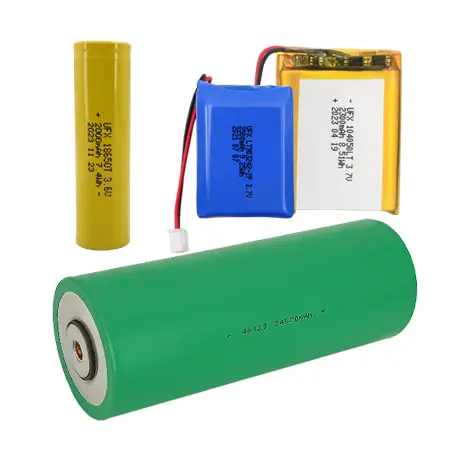Are you tired of your gadgets going off arbitrarily outside when it is blistering cold? When facing the biting cold, finding the best battery for cold weather is essential.
Whether in the middle of winter when you are out having your explorations or simply getting your devices to work with all those gloves on, battery performance becomes a genuine concern. But fear not, as we have got you covered in this article.
This article will explain how to choose the best cold-weather battery. In addition, we also discuss one of the best low-temperature lithium batteries you should consider in 2024.
Well, let’s begin.
Part 1. Low-temperature lithium battery features
Some of the key features regarding the low-temperature lithium battery include:
- Specialized Formulation of Electrote: They are the batteries with specialized formulation of electrolytes, optimally focused for cold conditions to provide consistent performance and high efficiency.
- Wide Temperature Operability: Low-temperature lithium batteries operate well in sub-zero temperatures, making them relevant to all outdoor activities and automotive applications in cold environments.
- Thermal Management Systems: They incorporate thermal management systems to regulate temperature fluctuations, ensuring stable performance and extending battery lifespan.
- Advanced Cell Design: Reduces temperature-induced stress on battery components, increasing cell reliability and durability under low-temperature conditions.
- Safety features: These batteries have built-in safety features, including overcharge and thermal runaway protection for safety in cold weather.
Ufine’s LiFePO4 Batteries Can be the Best Option in Cold Weather!
Ufine LiFePO4 batteries are top-notch for cold weather because they retain high discharge capacity even at 0°F, at 70%. In comparison, sealed lead-acid batteries do so at 45%.
Their temperature range of -20°C to 60°C (-4°F to 140°F) allows the batteries to be charged at either hot or cold temperatures, but charging in freezing temperatures threatens the cells due to lithium.
These outlast and recharge quickly compared to the SLA type, making them economical. That is why they are ideal for renewable energy systems and electric cars, allowing for reliable power even during temperature drop hours.
So, if you need the best battery for cold weather, check through our range.
Part 2. Why is choosing the right battery for cold weather important?
Before learning to choose the correct battery for cold weather, knowing its importance is essential.
Have you ever had your phone or camera up and dying while you’re out and about in the cold? Did your car have a hard time starting on a frosty morning? That’s when the correct cold-weather battery becomes very important.
When it’s chilly, batteries, especially the lithium-ion ones in our gadgets, don’t work either. They slow down and can’t give out power properly. Sometimes, this means shorter battery life, slow charging, or even total failure.
Why does this matter? Well, having your stuff die on you is more than just annoying. It’s also unsafe. Finding yourself stranded without your phone or GPS in the cold could be dangerous.
Also, the wrong battery in cold weather can ruin the battery itself—sooner than necessary, which will ultimately cost more money. Picking the proper battery is not just about keeping things running but protecting your stuff and yourself.
So now, we’ll learn how to pick the best cold-weather battery.
Part 3. How to choose the best battery for cold weather?
So many considerations come into play when it’s time to pick the best cold-weather battery, including but not limited to:
1) Consider Battery Type:
To start, you must select the battery type you want to acquire. There are two major types of batteries you can use in cold weather conditions:
1. AGM Batteries:
Designed with a unique glass mat separator, they absorb the battery acid and become spill-proof and maintenance-free. In freezing weather, AGM batteries outperform flooded batteries; even with falling temperatures, there is no electrolyte leakage to impede performance due to the sealed nature of an AGM battery.
This makes them a good choice for vehicles, boats, and equipment often exposed to cold environments.
2. Lithium-Ion Batteries:
These are lightweight and have a high energy density; hence, most electronic equipment loves them. At the same time, this battery performs relatively better under cold weather than conventional lead-acid batteries, and not all lithium-ion batteries are created equal.
Some may underperform under icy conditions, so it is critical to select a lithium-ion battery designed for cold weather conditions if its application is in cold, freezing temperatures.
2) Consider the Temperature Range:
When choosing a cold-weather battery, the main thing to look for is the temperature range of the battery for optimal performance. Usually, a cold climate-designed battery will have a more comprehensive temperature operating range, making it up to the mark and functional perfectly under sub-zero conditions.
Just be sure to choose the temperature rating for the battery that is equal to, or even better than, the coldest temperatures you can expect to get in your area to avoid reduced capacity or failure when it’s coldest.
3) Check Cold Cranking Amps (CCA) Rating:
Cold Cranking Amps (CCA) ratings generally measure a battery’s ability to provide power at low temperatures in an operational condition, specifically for starting vehicles. The higher the CCA rating, the more power the battery can deliver to the starter to crank the engine in cold weather.
If you purchase a battery for cold weather, ensure the CCA value is equal to or above the vehicle manufacturer’s original equipment. This ensures reliable starting performance even on frosty mornings.
4) Evaluate the Reserve Capacity of the Battery:
Reserve capacity is when a battery continues providing power without being recharged. In the case of colder temperatures, it’s preferable to use a battery with better reserve capacity because starting the car requires more energy as the engine oil thickens and resistance increases.
This will support the basic systems for a long time, even if the vehicle’s alternator fails, reducing the chances of being stranded in the cold.
When purchasing a battery, consider cold cranking amps and reserve capacity to guarantee ample starting power and sufficient continued running under cold weather conditions.
5) Tailoring Battery Choice to Application Needs:
Different applications demand different features from batteries when working under the cold. In this case, the needs of a vehicle, marine craft, or outdoor equipment would depend on starting power, cycling capability, or resistance to harsh conditions.
Consider the needs of your application when choosing a battery, and go for one designed to meet those requirements.
So, whether you need a high-cranking battery to start a vehicle or one that has deep-cycling characteristics to run a boat, selecting the proper type of battery will ensure it performs well and has a good life, even in cold weather.
Part 4. Conclusion
In conclusion, choosing the best battery for cold weather is essential to ensure reliable performance and safety, whether braving outdoors or simply navigating everyday tasks in frosty conditions.
By understanding the importance of battery selection and considering factors such as battery type, temperature range, CCA rating, reserve capacity, and application needs, you can make an informed decision to meet your specific requirements.
Part 5. FAQs
-
Does cold weather cause any damage to the battery?
Cold weather may cause damage to batteries. Chemical reactions in batteries slow down at freezing temperatures, producing lesser current and decreasing performance, which can be damaging. One can prevent this by buying batteries rated for use in cold weather. -
Which battery does better in the cold: Alkaline or Lithium?
Lithium batteries, on the whole, work better at cold temperatures than alkaline batteries. They generally lose their total capacity even at freezing temperatures, much less than alkaline batteries. You also get wider temperature ranges with lithium batteries. For the best performance, use lithium batteries formulated for cold conditions. -
Would the rechargeable batteries work in cold conditions?
Yes, but their performance will be affected. They perform at temperatures below zero; however, the capacity is limited, and discharging will also be slow. Rechargeable batteries, such as lithium-ion, are cold-rated. Do not charge in the cold to avoid such damage.
Related Tags:
More Articles

What Is a Disk Battery? A Simple Guide for Non-Tech Users
A disk battery is a small, round cell used in watches, remotes, and other electronic devices. It delivers steady power for compact, low-drain devices.
What Battery Powers a Space Heater?
Discover the type of battery that powers space heaters and learn how to choose the right one for efficient heating in your home or office.
What Is an LR14 Battery? Learn About This C-Size Cell
The LR14 battery, also known as a C battery, delivers steady power. Learn its specs, uses, lifespan, and how it compares to other battery types.
Watch Battery Dimensions Chart: Sizes, Voltages, and Equivalents Explained
Understanding watch battery dimensions helps you choose the right size, voltage, and equivalent model to keep your watch running safely and smoothly.
How Long Can You Rely on Battery-Powered Generators?
Discover battery generator runtime & lifespan factors. Learn how to maximize performance and choose the right power solution.




